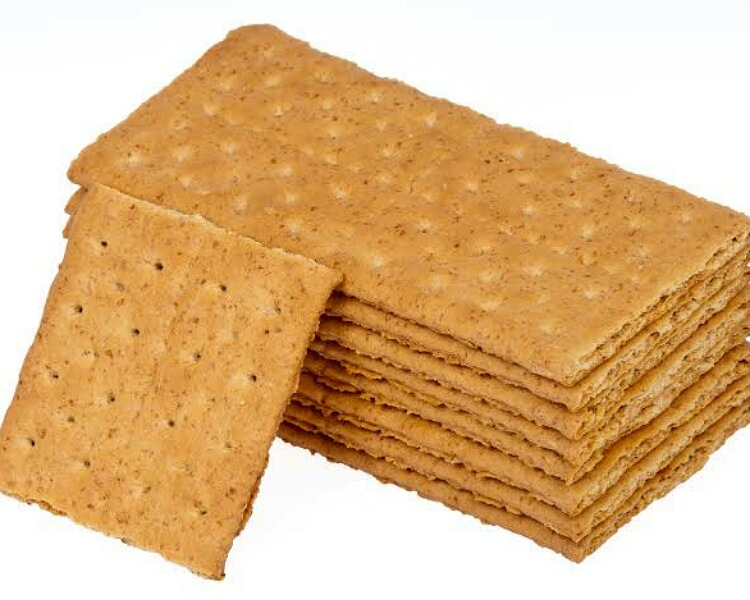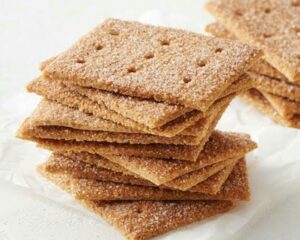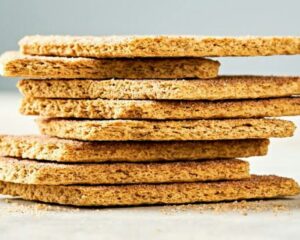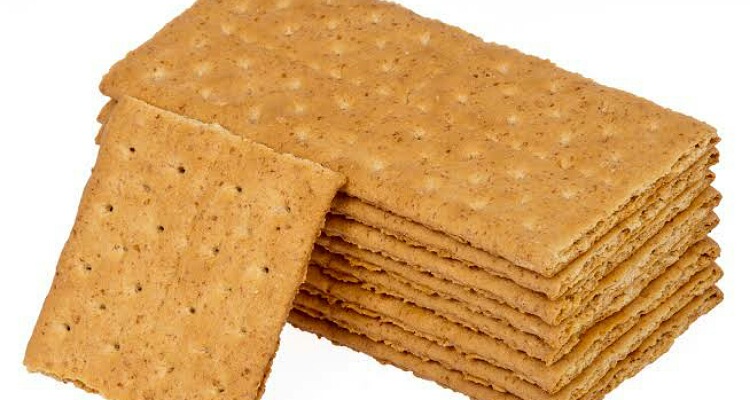The mention of Graham crackers brings back fond memories of childhood. It is those biscuits that make a classic snack any time of the day and anywhere.
Old and young and kids all enjoy it at the same time and equally. Their sweetness and crunchiness appeal to everyone. Are they healthy?
Graham crackers: ingredients and history
Graham crackers are composed of enriched whole wheat flour, with sugar, salt, leavening agent, and palm or canola oil (rapeseed oil).
Some have added other ingredients such as honey, molasses, cinnamon, soy lecithin, or chocolate. Since they are made of wheat flour, they contain gluten. And when they have honey, vegans may prefer to not take it.

These crackers originated in the mid-19th century in the USA. They were then made of Graham flour, hence the name. Graham flour is whole-grain wheat flour that is more coarsely ground.
The name Graham comes after Sylvester Graham who was a dietary reformer and Presbyterian minister. The commercial development of these crackers began in 1880.
National Biscuit Company mass-produced these from 1898. Later in the early 1910s, Loose-Wiles Biscuit Company joined in to manufacture it in large amounts.
Nutrition in these crackers
2 crackers are around 28 grams or one ounce in weight. This provides 122 calories with 22 grams of carbs and 3 grams of fats. Sugar is 7 grams and fiber is less than 1 gram. The protein in this is 2 grams.
There is no cholesterol since the biscuit has only plant-based ingredients. These biscuits also have 146 mg of sodium in 28 grams and fair amounts of magnesium, selenium, and niacin.

But since these crackers have added sugar, one should not consume them in more quantities. Moderate intake is best. In the case of kids, crackers can be consumed but in moderation for these two reasons.
Firstly children 2 to 18 years old require at least 14 to 31 grams of fiber per day. Crackers have very less fiber content. Also, these biscuits have added sugar.
Medical organizations advise that children less than 2 years should not have sugar and those above should not have more than 25 grams of it in a day. Whereas crackers have 3 to 4 grams of sugar per cracker.
Uses and goodness for heart and diabetes?
To make them more nutritious, one can add fruits to them or top them with peanut butter. Raisins and dry fruits can be added for the same effect to enhance fats and proteins and increase fiber.
Graham crackers can be used as crumbs to create crusts on pies and moon pies. They can be layered on the top, middle, or base of a cheesecake.
These crackers form the major ingredient of s’more. Additionally, they are part of the traditional Filipino icebox cake mango float.

These crackers have less fiber and more sugar. Therefore they are not good for the heart. Heart patients can have them but only in small amounts. Consume these along with other foods such as fruits, vegetables, nuts, and Greek yogurt.
For some reason, diabetic patients should not consume too many crackers or food containing them as it might lead to a high rise in blood sugar in these patients.
They should also couple these crackers with foods containing high fiber, fat, and protein. This will reduce the spike in blood sugar in them. Adding berries and Greek yogurt would be healthy.
Read more about Jackfruit: health benefits and nutritional value!
The take-home message is to eat moderate quantities of the crackers and add on with foods high in fiber, proteins, and fat. Reserve them as a treat food and not for regular or daily intake.
